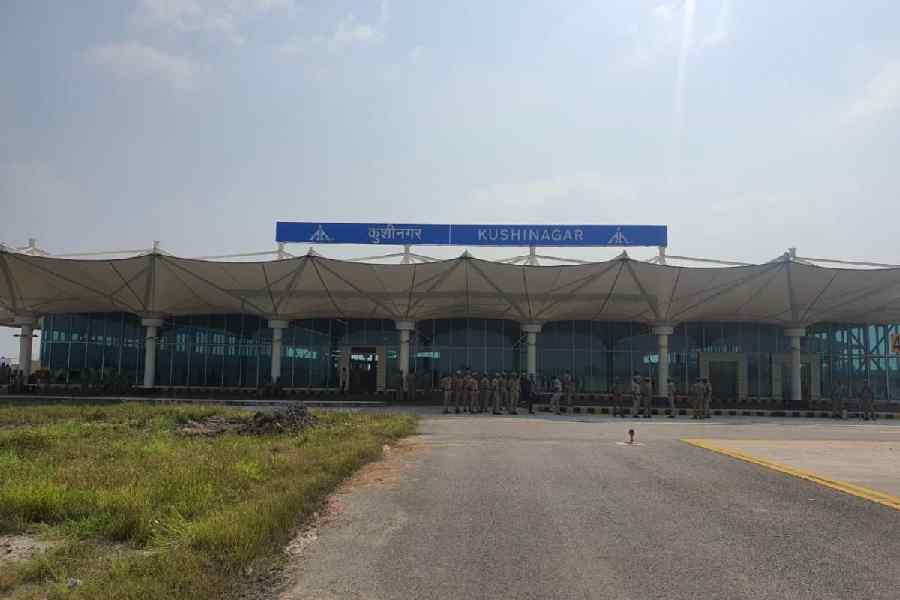 |
| The winning design for the Nalanda master plan |
New Delhi, May 16: If its rich and fabled library, stocked with thousands of books on various subjects, was the star attraction at the ancient Nalanda University, the upcoming seat of learning will try to replicate the magic of the past.
On the cards is a massive library at the centre of its sprawling, green campus situated near the site of the ruins of the old university.
Celebrated architect Balkrishna V. Doshi, whose firm Vastu Shilpa recently won the contest to design the new Nalanda University, laid down the details of the master plan today. Doshi worked for four years with ace architect and designer Le Corbusier — who planned the city of Chandigarh — in Paris in the early fifties.
“A large dome-shaped library and a huge lake called Sagar Ratna will be the central nodal part of the university campus, which will be more like a township. Our basic idea is to have a campus, which blends with local ecology and environment, becomes an integral part of the rural landscape rather than an intrusion and which is defined by tree tops and foliage rather than a skyline determined by the roofs of the buildings,” said Doshi, whose design of Indian Institute of Management, Bangalore, has been widely hailed.
A wide road called “Bazaar of Learning” will house centres of studies of various disciplines on either side.
Under the initial detailed project report, the estimated cost of construction would be Rs 1,560 crore. Apart from the Union government, many countries of the East Asian Summit have committed to help revive the glorious site of learning in the state.
Construction for Phase I of the project, which will include erecting two study centres among other structures, is expected to begin in a few months.
Ace architect Rajeev Kathpalia, who is also associated with the Ahmedabad-based winning firm, said it would be a net-zero energy, net-zero emission, net-zero waste and net-zero water campus.
“We will have ultra-low energy facilities that will generate energy from unconventional sources. Recycling of all waste generated within the campus will be our motto. Organic waste will be profitably used for generation of energy or as compost. Reservoirs and ponds will feature as an integral part of the landscape design. We will have schemes to both recycle water and tap rainwater. It will probably be the largest such campus in the world to be self-sufficient,” he said.
Other salient features of the campus will be energy- efficient desiccant evaporative (devap) air-cooling, inter-connected low-lying areas to create a flow and network of water and compact premises where all buildings will be within a 10-minute walking distance from the central node.
The sprawling campus will feature a grand outreach centre, entrance plaza, art centre and museum, administrative building, communication centre and recording studio, international studio, campus inn, auditorium, amphitheatre, residences for faculty members and staff, ponds, central dining hall, students’ housing, students’ centre, school and crèche, club, multipurpose hall, sports field, fire station, green houses, experimental agriculture fields, ponds for irrigation, devap systems, elevated reservoir and biogas biofuel plants.
The university, whose governing council is headed by Nobel laureate Amartya Sen, will be a hub of postgraduate and research studies in the subjects of history, ecology and environment, Buddhist studies, philosophy and comparative religion, languages and literature, international relations and peace studies, information science and technology, business management in relation to public policy and development studies.
Of these, the schools of historical studies and environment and ecology are expected to become functional from 2014, vice-chancellor Gopa Sabharwal said.











